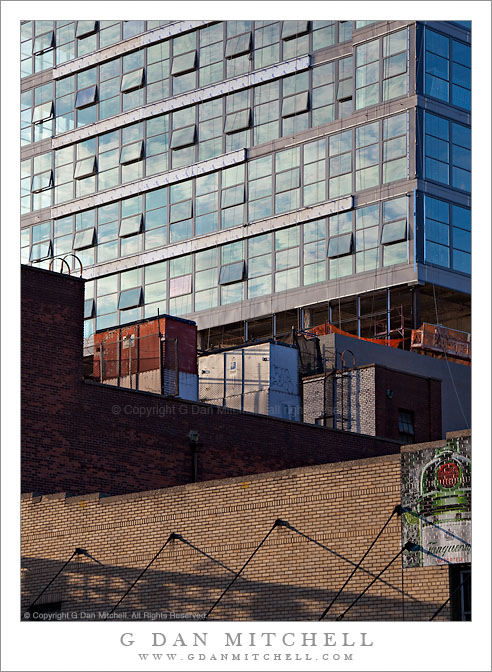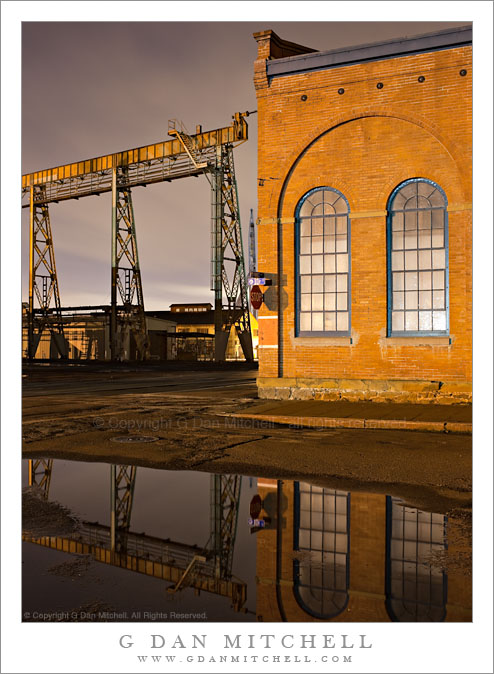Brick Walls and Building Near High Line Park. New York, New York. August 14,2010. © Copyright G Dan Mitchell – all rights reserved.
Brick walls and a building under construction above the High Line Elevated Park, New York City.
Another bit of architecture photographed from the High Line Elevated Park in Chelsea on a summer evening in August. The most interesting features of this evening included the “mackerel sky” clouds to the west, which are reflected in the windows of the upper building, and the warm light of early evening. The juxtapositions of angles and textures (especially the bricks and the glass windows) got my attention as we walked along the High Line. I cannot identify the building, but it appears to be under construction.
This photograph is not in the public domain and may not be used on websites, blogs, or in other media without advance permission from G Dan Mitchell.
G Dan Mitchell Photography | Twitter | Friendfeed | Facebook | Facebook Fan Page | Email


